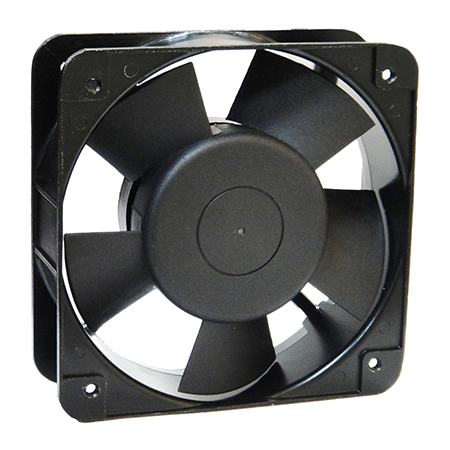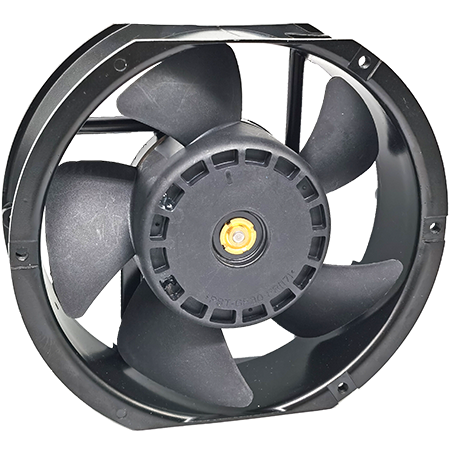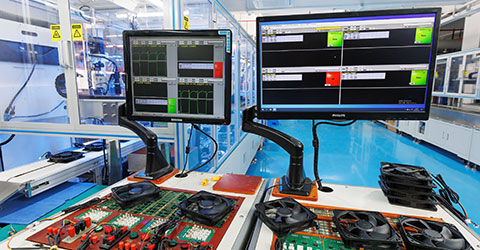Centrifugal Fan vs. Axial Fan (Part 2): Maintenance Tips for Long-Term Efficiency
The Centrifugal Fan and Axial Fan are used in more and more scenarios. The maintenance and restoration of the Centrifugal Fan and Axial Fan have become part of daily life. If the centrifugal fan and axial fan are to be used longer, they must be maintained and preserved. This article mainly explores the maintenance and preservation methods of Centrifugal fans and Axial fans, as well as the cost of maintenance or restoration.
1.Maintenance and Longevity: Centrifugal vs. Axial Fans
1.1 Maintenance
Centrifugal Fan :
lMonthly Checks
Impeller Cleaning | Belt Tension Verification |
Use compressed air (≤60 PSI) or soft-bristle brushes to remove dust buildup. Avoid water-based cleaning unless the fan is IP66-rated (e.g., U.S. pharmaceutical plants using stainless steel centrifugal fans). | Measure tension using a digital tensiometer (e.g., Gates Tension Pro). Proper tension prevents slippage and reduces motor strain. |
lAnnual Overhaul
Bearing Lubrication | Housing Leak Detection |
Apply high-temperature grease (e.g., Mobilith SHC 460) compliant with ISO 6743-9. Over-greasing (>20% fill) causes overheating; under-greasing leads to wear. | Use ultrasonic leak detectors (e.g., UE Systems) or smoke tests (e.g., Dwyer Instruments) to identify air leaks in ducts or gaskets. |
lFilter Replacement
HEPA/ULPA Filters | Industrial Applications |
Replace every 3 months in semiconductor cleanrooms (ISO Class 4-5) per SEMI S2. | Australian mining operations use self-cleaning cartridge filters (e.g., Donaldson Torit) with differential pressure sensors to optimize replacement intervals. |
Axial Fan :
lQuarterly Inspections
Debris Removal:Use vacuum systems (e.g., Nilfisk-Advance) or compressed air to clear lint, leaves, or ice from blades.
Dynamic Balance Check:Perform blade balancing using a laser alignment tool (e.g., Fluke 820-400). Imbalance causes vibration (>2.5 mm/s RMS velocity per ISO 1940 G6.3).
lBearing Greasing
Continuous Operation: Apply lithium-based grease (e.g., Shell Alvania) every 6 months. Use a grease gun with pressure relief to avoid overpacking.
lMotor Alignment
Laser Alignment: Ensure motor and blade hubs are aligned within ±0.05 mm using tools like the Zemic AL600.

1.2Longevity Comparison
Component | Centrifugal Fan | Axial Fan |
Bearings | 20,000–40,000 hours* | 15,000–30,000 hours* |
Belts | 2–3 years (if tensioned) | 1–2 years (direct drive) |
Impeller/Blades | 10–15 years (with cleaning) | 8–12 years (salt spray) |
Conditions: ISO 14644-1 compliant environments; 8-hour daily operation.
2.Cost Analysis: Short-Term vs. Long-Term
When selecting between centrifugal and axial fans for energy-efficient ventilation, it’s important to look beyond just initial purchase price. A true cost comparison must consider total cost of ownership (TCO), which includes energy use, maintenance requirements, and expected lifespan. Here's how these two types of fans compare from both a short- and long-term financial perspective:
2.1 Initial Cost
lCentrifugal fans generally come at a higher upfront cost, ranging from $500 to $5,000, depending on size, motor type, and housing material. This is largely due to their more complex design, which includes scroll casings, backward or forward-curved blades, and higher-grade motors.
lAxial fans, on the other hand, are simpler in construction and thus more affordable, with typical costs ranging from $200 to $2,000. Their compact size and ease of installation make them a preferred choice in cost-sensitive or smaller-scale applications.
Verdict: If you're working with a tight capital budget, axial fans offer a clear advantage in terms of upfront savings.
2.2 Energy Costs
lCentrifugal fans are effective at moving air against high static pressures (e.g., in ducted or filtered systems), but they often require more power to deliver the same airflow as axial fans. This results in higher energy consumption, especially when operating continuously.
lAxial fans are optimized for free-air or low-resistance systems and generally provide greater airflow per watt of electricity consumed. In large-scale ventilation or open-air cooling, this translates into lower operating costs over time.
Verdict: For energy-efficient performance, especially in large-volume or continuous-duty settings, axial fans tend to outperform centrifugal models.
2.3 Maintenance Requirements
lCentrifugal fans typically require moderate maintenance, including:
Periodic filter replacements (if used in HVAC systems)
Bearing lubrication
Impeller cleaning to remove dust buildup
Their enclosed design and reliance on more moving parts mean they need more regular attention to maintain optimal performance.
lAxial fans are known for low-maintenance operation. With fewer moving parts and open construction, they are easier to inspect and maintain. Most models operate for years with minimal servicing beyond occasional cleaning.
Verdict: If you're managing multiple units or aiming to minimize labor costs, axial fans are easier and cheaper to maintain.

2.4 Lifespan
lCentrifugal fans tend to last longer, with an average operational life of 10 to 15 years, thanks to their heavy-duty build and industrial-grade components. With proper maintenance, they can often exceed this range in stable environments.
lAxial fans have a typical lifespan of 8 to 12 years, which may be slightly shorter depending on application and environmental conditions. However, the lower cost and simplicity often justify earlier replacement cycles.
Verdict: For long-term durability in harsh or high-pressure environments, centrifugal fans may offer better return on investment despite their higher initial cost.
Bottom Line:
Factor | Centrifugal Fan | Axial Fan |
Initial Cost | Higher ($500–$5,000) | Lower ($200–$2,000) |
Energy Use | Higher (for same airflow) | Lower (more efficient) |
Maintenance | Moderate | Low |
Lifespan | 10–15 years | 8–12 years |
If your priority is lower upfront investment and minimal upkeep, axial fans are an excellent choice. However, for long-term durability and performance in high-resistance systems, centrifugal fans may justify their higher cost with extended lifespan and better pressure handling.
Conclusion: Making the Correct Decision
The decision between centrifugal and axial fans hinges on your specific airflow, pressure, and environmental requirements. Centrifugal fans excel in high-pressure, low-airflow scenarios, while axial fans dominate in high-airflow, low-pressure applications. By evaluating performance metrics, energy efficiency, and long-term costs, you can select the fan that best aligns with your operational goals.
Learn more:
https://www.yccfan.com/articledetail/491.html
If you want a small size fan, tell you from this article what makes YCCFAN's micro electric fans a preferred choice for a wide range of applications.
https://www.yccfan.com/articledetail/478.html
When choosing a cooling Fan, the YCC Fan brand is one of the best choices. Learn about the advantages of choosing the YCC Fan brand from this article.
Ready to enhance your airflow system? YCCfan offers advantages in both technology and products. Contact YCCfan today to get started.









